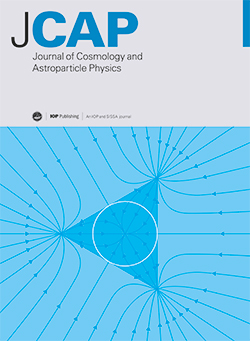Detectable signals of post-Born lensing curl B-modes
IF 5.3
2区 物理与天体物理
Q1 ASTRONOMY & ASTROPHYSICS
Journal of Cosmology and Astroparticle Physics
Pub Date : 2025-02-14
DOI:10.1088/1475-7516/2025/02/034
引用次数: 0
Abstract
Curl lensing, also known as lensing field-rotation or shear B-modes, is a distinct post-Born observable caused by two lensing deflections at different redshifts (lens-lens coupling). For the Cosmic Microwave Background (CMB), the field-rotation is approximately four orders of magnitude smaller than the CMB lensing convergence. Direct detection is therefore challenging for near-future CMB experiments such as the Simons Observatory (SO) or CMB `Stage-4' (CMB-S4). Instead, the curl can be probed in cross-correlation between a direct reconstruction and a template formed using pairs of large-scale structure (LSS) tracers to emulate the lens-lens coupling. In this paper, we derive a new estimator for the optimal curl template specifically adapted for curved-sky applications, and test it against non-Gaussian complications using N-body cosmology simulations. We find non-foreground biases to the curl cross-spectrum are purely Gaussian at the sensitivity of SO. However, higher-order curl contractions induce non-Gaussian bias at the order of 1求助全文
约1分钟内获得全文
求助全文
来源期刊

Journal of Cosmology and Astroparticle Physics
地学天文-天文与天体物理
CiteScore
10.20
自引率
23.40%
发文量
632
审稿时长
1 months
期刊介绍:
Journal of Cosmology and Astroparticle Physics (JCAP) encompasses theoretical, observational and experimental areas as well as computation and simulation. The journal covers the latest developments in the theory of all fundamental interactions and their cosmological implications (e.g. M-theory and cosmology, brane cosmology). JCAP''s coverage also includes topics such as formation, dynamics and clustering of galaxies, pre-galactic star formation, x-ray astronomy, radio astronomy, gravitational lensing, active galactic nuclei, intergalactic and interstellar matter.
 求助内容:
求助内容: 应助结果提醒方式:
应助结果提醒方式:


